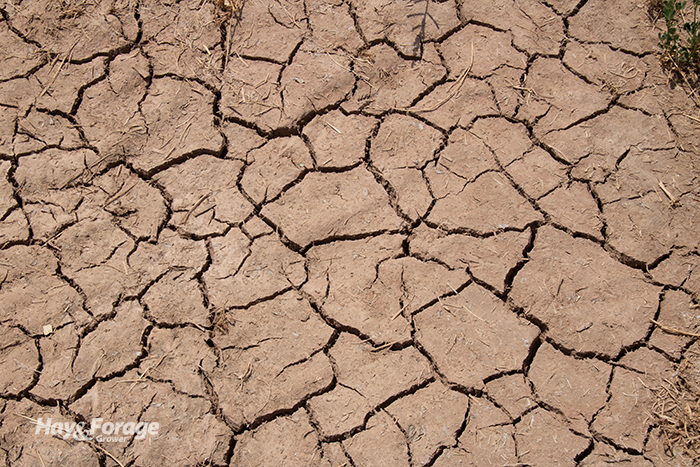
Torrential rains, drought, flooding, and even hurricanes were all felt in pastures and hayfields across the country last year. Although no amount of money can atone for the long-lasting effects of these extreme events, better recordkeeping can help maximize federal disaster relief assistance.
As someone who helps farmers estimate forage production losses, Shanna Reynolds knows the value of a good record book. At the American Forage and Grassland Council’s annual conference last month in Kissimmee, Fla., the county extension coordinator with the University of Georgia offered some proactive recordkeeping tips that could help farmers should they ever need to file a claim.
Write it down
Reynolds encouraged the audience to find more information about various relief programs at farmers.gov or by calling their county extension office. Though not an exhaustive list, she noted the Noninsured Disaster Assistance Program (NAP), the Emergency Conservation Program (ECP), the Livestock Forage Disaster Program (LFP), and the Livestock Indemnity Program (LIP) may be some of the most pertinent to forage producers.
Regardless of the type of extreme weather or natural disaster farmers encounter, recordkeeping should be a priority, Reynolds said. But taking notes from the weatherman won’t tell the whole story. Documenting data specific to your farm’s exact location can make the difference between receiving a payment or not.
Instead of only jotting down the inches of water in the rain gauge after a storm rolls through, record the timing and duration of the rainfall as well. With a greater frequency of torrential rains and high-impact precipitation, the more details about individual events, the better.
For example, Reynolds shared that her home farm in Oglethorpe County didn’t receive any rain in the month of October but then got 8 inches in a single day. “It’s not helpful whenever rain comes in that form, so if you can keep those records to share with us, it’s going to give us a more accurate picture of what you’re working with.”
Pictures themselves are worth a thousand words, especially during drought. Take photos of cracked soil or low water lines in ponds or streams that accurately illustrate water challenges. Even if conditions are not necessarily extreme, collecting ample evidence throughout the season could be to one’s benefit later on. In some cases, farmers are only able to file a claim if they reported losses earlier in the year.
For good measure
When it comes to measuring losses, Reynolds offered several ways for farmers to track pasture and hayfield production from year to year. Start by keeping a record of the number of bales made or tons of forage harvested from each field. Likewise, using a grazing stick to estimate forage yield before putting livestock on pastures will provide a baseline for annual production comparisons.
“The easiest way to measure anything is if we don’t have to estimate at all,” Reynolds asserted. “We can just calculate a percentage loss a lot of times if someone keeps good records every year.”
If a grazing stick isn’t your style, at least record how many grazing days you get out of each paddock or rotation. On the other hand, documenting when you begin feeding hay — and how much hay — can also help communicate abnormal conditions. Keeping receipts of other commodity feed costs and recording cull cow numbers may also help make a case for relief assistance.
“If in a typical year you start feeding hay on the first of November but this year you had to start feeding hay on the first of August, that is going to count as information we need,” Reynolds stated.
When concrete data isn’t available, Reynolds and her fellow county agents can sometimes determine production losses based on more subjective observations. For instance, if farmers can recall certain months of the year when hay production dwindled or a specific cutting that was significantly delayed by rain, those can be valid experiences. Of course, having these observations in writing will always be more valuable than word of mouth, which is all the more reason to commit to keeping records on a regular basis.

